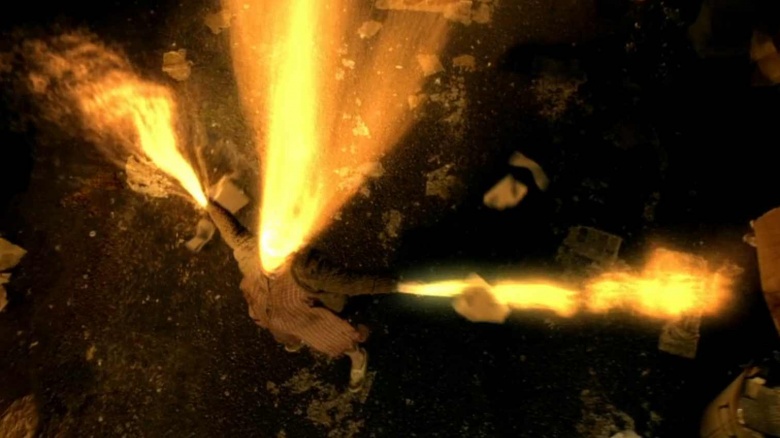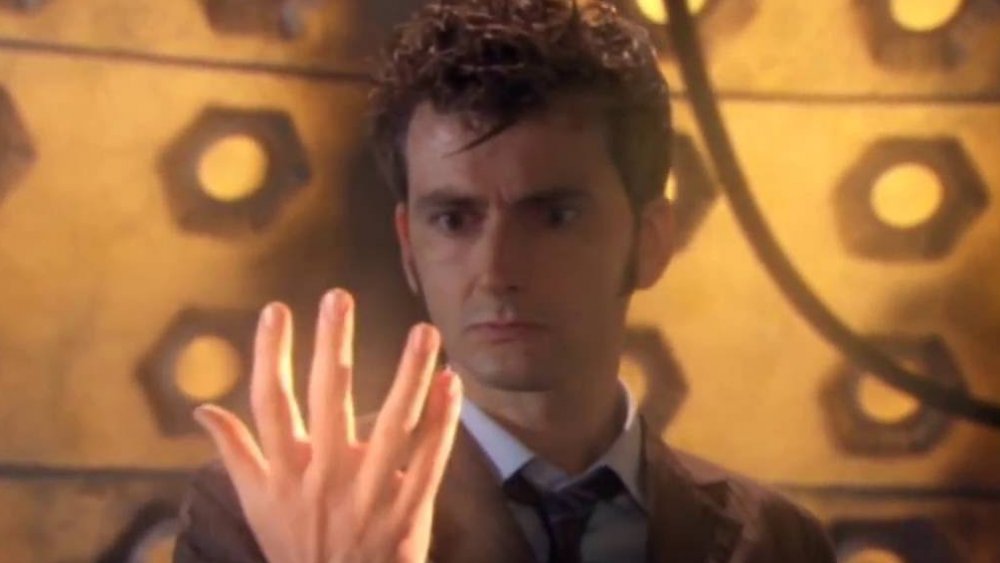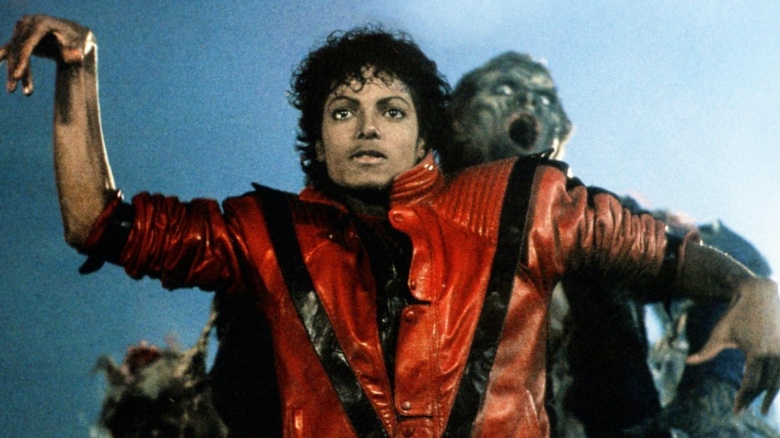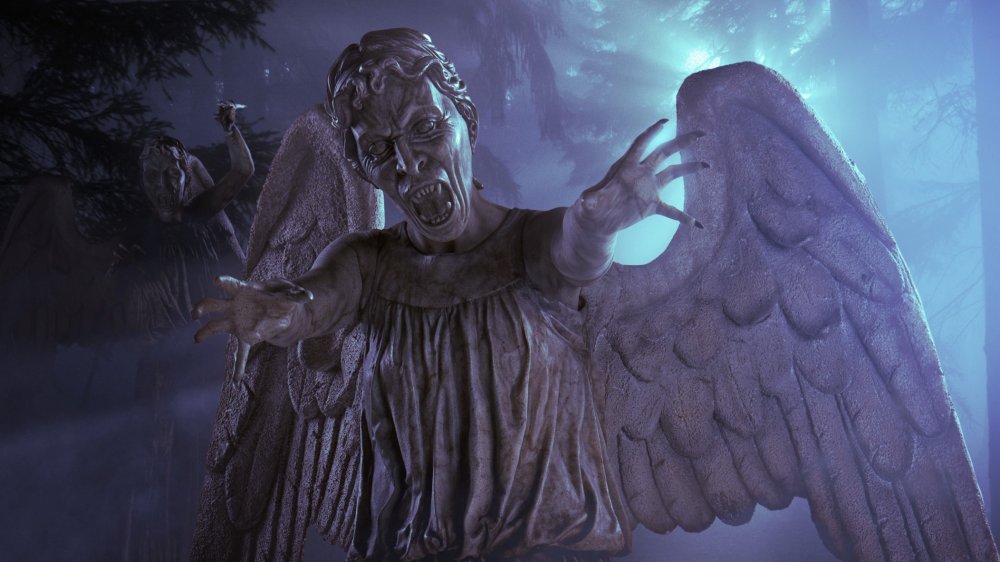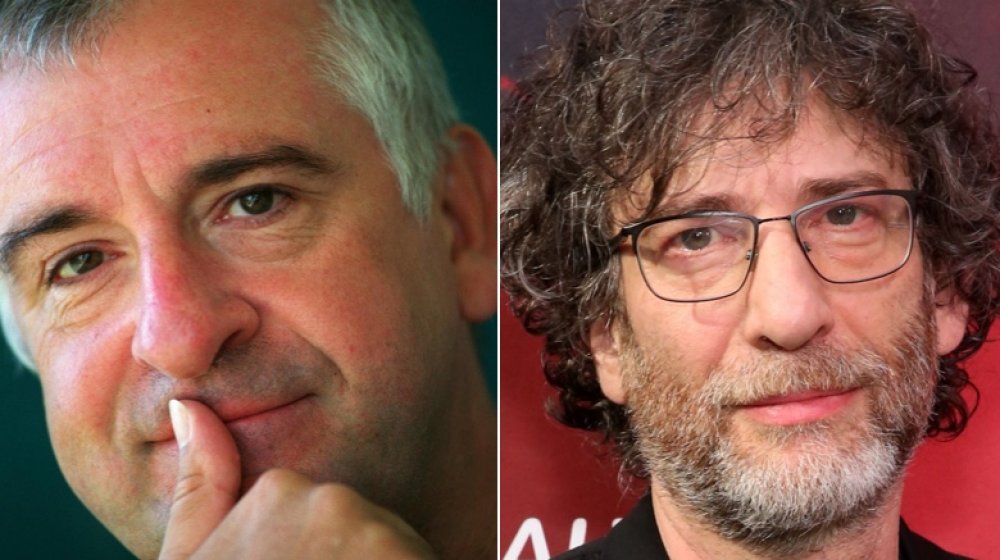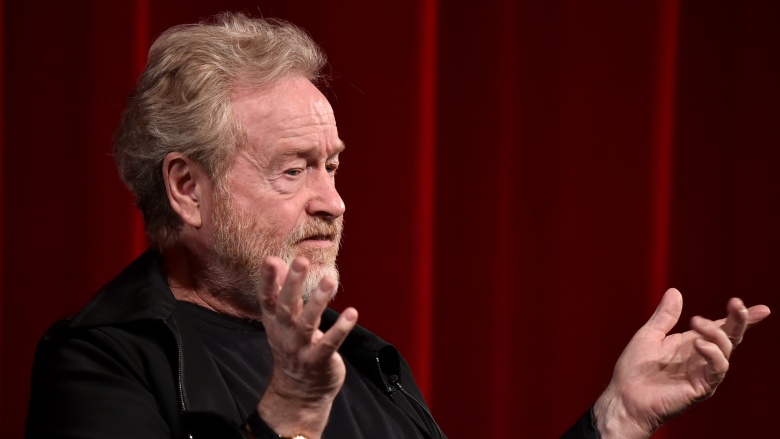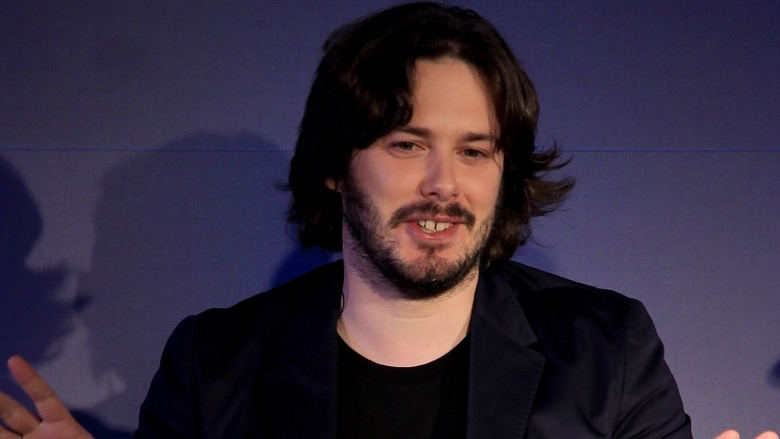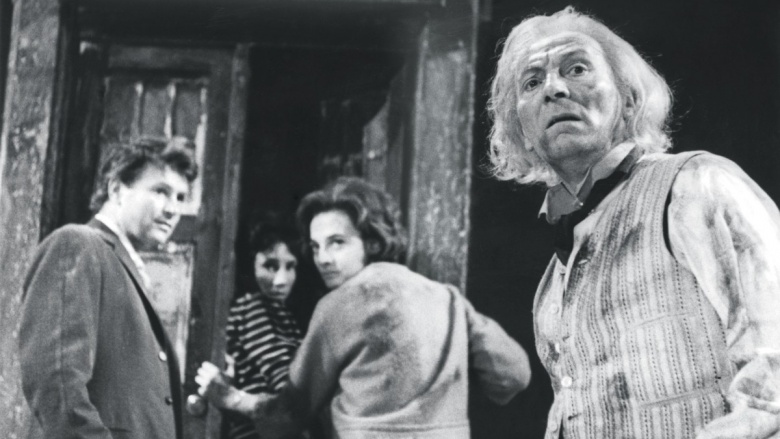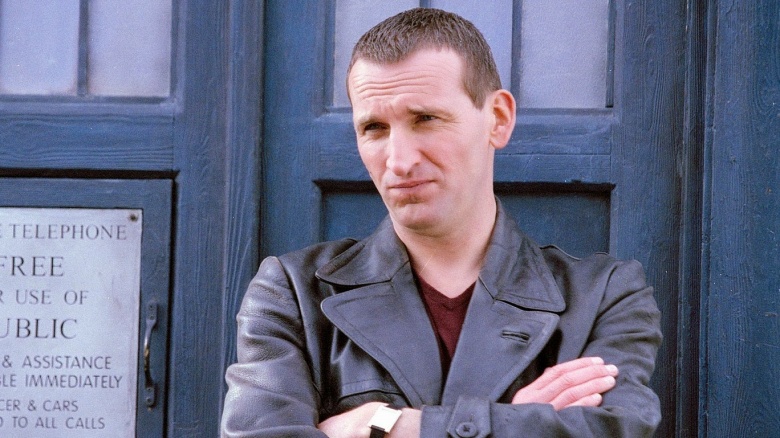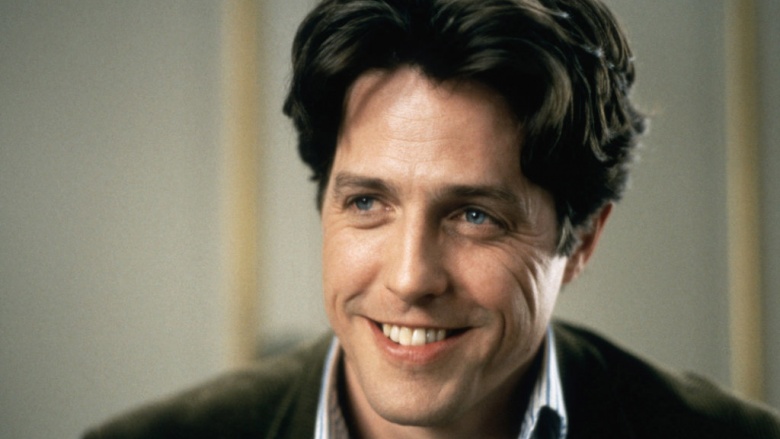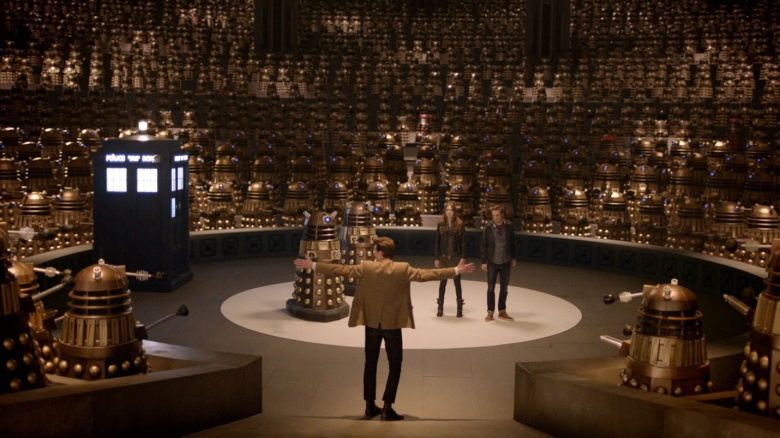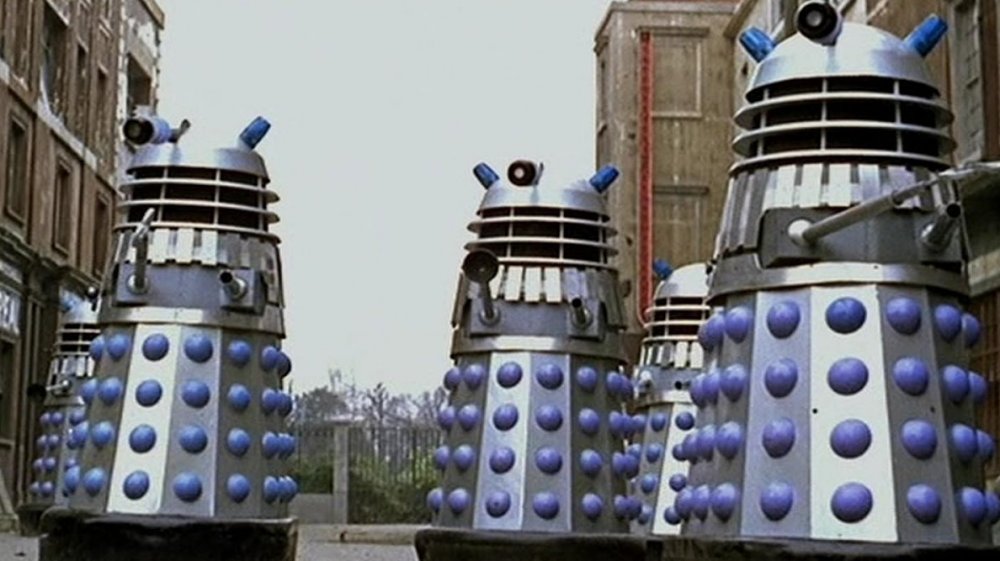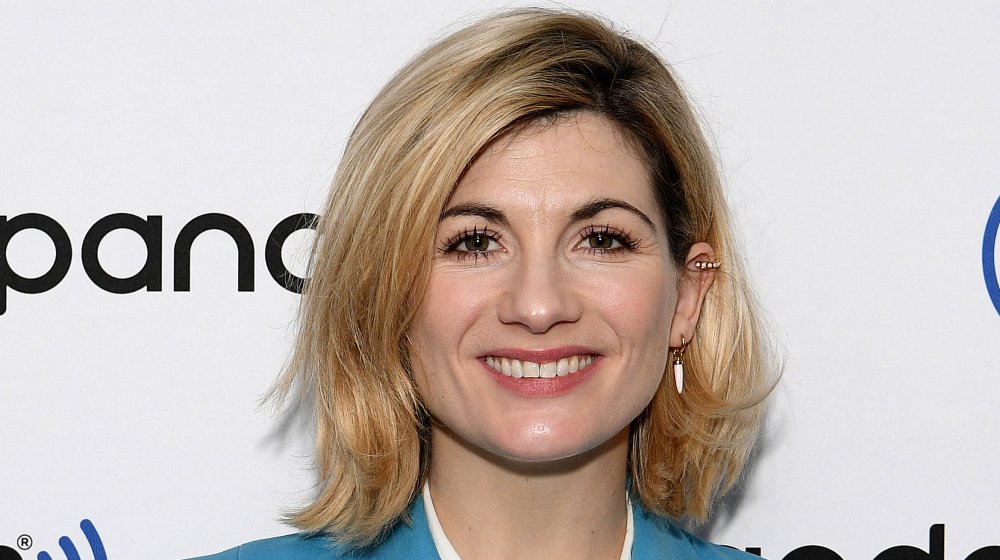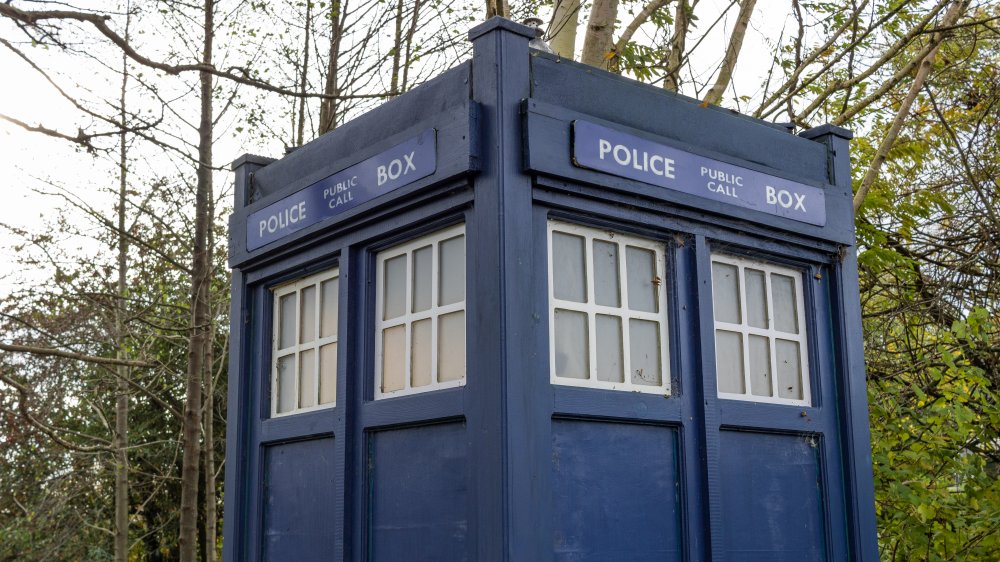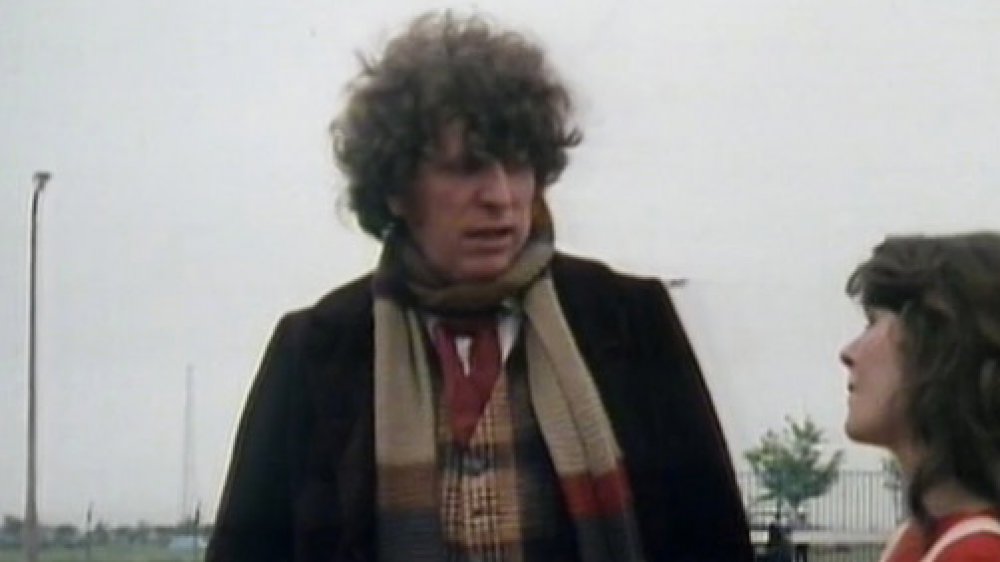The Untold Truth Of Doctor Who
The BBC series Doctor Who is a grandaddy of the science fiction genre, with adventures dating back to its debut in 1963, and over the decades, the Doctor's journey has taken some wild and weird turns. The series follows an alien who travels through space and time; it's a setup whose narrative possibilities are practically limitless, and the show's taken full advantage.
From fan theories becoming canon to near misses that could've fundamentally changed the structure of the series, the story of Doctor Who is a strange and storied one. We're digging into little-known facts about some of the series' most iconic villains (which only serves to make them even creepier), ways the show changed the TV industry, and some casting decisions that could've made for some very different Doctors over the years.
Let's tackle the untold story of Doctor Who.
The Doctor's regeneration was based on acid trips
One big reason Doctor Who has lasted so long is the fact that it's not beholden to one star. The producers built in a process to change the main actor and have it fit right in with the narrative: regeneration. By regenerating, the Doctor changes to a new actor with a different personality, though he typically retains most of his memories. It gives enough wiggle room to recast the role as needed, and though it's certainly a risky move on the surface, it's been a key part of the show's longevity. So how'd they come up with the idea? Tripping on acid. Seriously.
According to the BBC, the producers described the process in an internal memo in the 1960s. According to the creative team, the regeneration was supposed to be a "horrifying experience" where the Doctor "relives some of the most unendurable moments of his long life, including the galactic war." The Doctor is forced to face everything he's done in the moment of regeneration, and the producers say it's essentially like he "had the LSD drug and instead of experiencing the kicks, he has the hell and dank horror which can be its effect." You'll never watch a regeneration the same way again.
Talkin' 'bout regeneration
There's also the whole matter of why the Doctor needs to regenerate, but from the standpoint of the actors, producers, and writers who make the show. According to the BBC, after three years playing the gallant Gallifreyan 58-year-old star William Hartnell was ready to leave Doctor Who in 1966. Not only was his health increasingly poor, he didn't care for how the show's style was evolving under the guidance of newly appointed producer Innes Lloyd and story editor Gerry Davis. But how to continue Doctor Who if the lead actor wanted out? They killed him off... sort of. The show's creative staff came up with an idea: Whenever the centuries-old Doctor grew exhausted and weak, he could "regenerate" and take on a new form, in a new body... provided by a new actor, of course. That ability to freely recast its main character has helped the show stay alive for decades.
Michael Jackson and Bill Cosby were once considered for the Doctor
Thanks to regeneration, plenty of different actors have taken up the Doctor's mantle — and some potential stars that could've taken the franchise in very different directions. According to The Times, Michael Jackson and Bill Cosby were at the top of the list to play the Doctor in a 1988 film adaptation that never materialized. These might seem like some outside the box choices for the role, but remember, this was the late 1980s — Jackson was trying to branch into film with efforts like Captain EO and Moonwalker, and Cosby was in the midst of The Cosby Show. Fans waited years for a female or black take on the iconic character, but it's amazing to think the show could've embraced that diversity far earlier than it ultimately did. Just think: In an alternate universe, there's a trilogy of Doctor Who films starring Michael Jackson. The King of Pop — and the king of time.
Don't look away from this bit about Weeping Angels
Introduced in the 2007 episode "Blink," the terrifying Weeping Angels are essentially the statues you'd find in graveyards... only they're secretly alive and they advance on (and banish) anyone who dares avert their eyes. Written by Steven Moffat, these unsettling creatures are based on, brace yourselves, a real-life experience. While on a vacation in the coastal English county of Dorset he "walked past this graveyard and it was chained up, with a sign that said 'unsafe structure within,'" Moffat said at Oxford Union (via Radio Times). He went in to look around, and "inside was a weeping angel," a statue of an angel, depicted crying. Moffat returned to the graveyard years later, and here's where it gets weird. "There was the sign, that said 'unsafe structure within', but no weeping angel," he said. "There are two possible explanations. One is that weeping angels are real. The other is that I somehow made up the weeping angel and it was never there." He even researched the graveyard, and found no evidence that there was ever a weeping angel statue there.
And once you find out how they're brought to life, they'll freak you out even more. Though it'd be easy to assume the Weeping Angels are real, custom-made statues moved around the set, they're actually actors and actresses wearing extensive prosthetics.
Steven Moffat turned his own 'stupid' 1995 fan theory into canon
It's crazy to think, but Doctor Who has been around long enough that kids who watched the series growing up are now old enough to actually be writing and producing the series, and that's exactly what happened for showrunner Steven Moffat. In 1995, when he was still just a fan, Moffat posited a fan theory in a Doctor Who chat room. His idea was that the universe developed the word "doctor" to describe a healer or peacemaker from the Doctor's travels throughout time and space. Put simply, he inspired the word itself. Moffat admitted his theory was "stupid," but said he was "rather proud" of it anyway.
Fast forward 16 years, and Moffat is running Doctor Who. In the 2011 episode "A Good Man Goes to War," Alex Kingston's River Song gives a speech to the Doctor, telling him, "The word for healer and wise man throughout the universe. We get that word from you, you know. But if you carry on the way you are, what might that word come to mean?" Yep, Moffat basically turned his fan theory into legitimate Who canon.
Why the name in the written by credit looks familiar
Douglas Adams is a sci-fi hero thanks to his Hitchhiker's Guide to the Galaxy book series, but he also cut his teeth as a script editor and writer on the old school Doctor Who series in the 1970s. His best-known Doctor Who work is the Tom Baker-era story "City of Death," a beloved serial that pitted the Doctor against Count Scarlioni. That episode is still touted as one of the best of vintage Who, though it wasn't Adams' only contribution to the Who-niverse. He was also wrote the unaired serial "Shada," which was never completed due to a strike at the BBC. It was supposed to be the final serial of the show's original 17th season. It sat on the shelf for more than a decade, until a narrated version (with Tom Baker) featuring some finished footage was released in 1992. It was also turned into an audio drama (with animation) in 2003, and adapted as a novel by Gareth Roberts in 2012.
With hundreds of episodes produced since 1963, it's not surprising that a huge number of writers have written for Doctor Who, many of them famous for their non-TV science-fiction projects. Author Neil Gaiman (Good Omens, Stardust, The Sandman) wrote for the show in the 2010s, as did Richard Curtis, the writer and director of romantic comedies like Love Actually and Four Weddings and a Funeral. Bob Baker, an original co-writer of the Wallace and Gromit franchise in the 1980s, penned more than three dozen Who episodes in the 1970s.
Current Doctor Peter Capaldi was a hardcore Who fan as a teenager
Much the same way showrunner Steven Moffat relished the chance to make his fan theory canon, later Doctor Who star Peter Capaldi was also living out a childhood dream. Capaldi was a hardcore Doctor Who fan as a teenager, and has made no secret about the fact that the show is what inspired him to get into show business (though he originally just wanted to work on set design and help build a TARDIS). As a teenager, Capaldi wrote a lengthy essay about the awesomeness of the show's opening credits in a Doctor Who fanzine, and also sent letters to the Radio Times celebrating the show's 10th anniversary (complete with hopes that every school in Britain will build its own Dalek) when he was just 15 years old.
Ridley Scott almost built the Daleks
A young Ridley Scott (Alien, Blade Runner, The Martian) worked as a set designer on Doctor Who, and was originally attached to do set design for "The Daleks," the episode that introduced the pepper pot-esque killing machines. That's right: Ridley Scott almost designed the first Daleks. But Scott left the BBC for a job at Granada Television in Manchester to start training as a director just before production started, and set designer Raymond Cusick was assigned to bring author Terry Nation's description of the Daleks to life (on an ultra-small TV budget). Who knows how they might've looked if Scott had stuck around? On the flip side, we may never have gotten Alien or Blade Runner if he hadn't jumped ship from the BBC, so we're calling that one a win.
Edgar Wright could've directed the New Who pilot 'Rose'
When the BBC started getting its Doctor Who revival off the ground in 2005, the network was looking for a buzzy director to helm the premiere episode "Rose." It turns out Edgar Wright (Shaun of the Dead, Scott Pilgrim vs. the World) was at the top of the list. Wright cut his teeth on the British sci-fi comedy Spaced, and was busy directing Shaun of the Dead at the time. Sadly, that project kept him a little too busy to take the Doctor Who gig — a decision he's joked his mother "has never forgiven [him] for." Hard to blame her. Instead, Keith Boak (EastEnders, Silent Witness) landed the job.
Doctor Who broke the glass ceiling for the first female producer at the BBC
Verity Lambert was hired as the first producer for Doctor Who in 1963 — making her the first female producer at the BBC. Lambert was in charge of the first two series of Doctor Who and left the project in 1965, but her legacy lives on: after her start on Doctor Who, Verity started her own television company, and work on several shows over the ensuing decades. Upon her passing in 2007, former Doctor Who showrunner Russell T Davies said "There are a hundred people in Cardiff working on Doctor Who and millions of viewers, in particular many children, who love the programme that Verity helped create." Her story, along with the saga that launched Doctor Who, was also chronicled in the TV movie An Adventure in Space and Time.
The first Doctor of the modern era didn't like the direction of the show
Though he's softened his stance on Doctor Who as of late, Christopher Eccleston famously disliked Doctor Who following his one-year stint as the man in the little blue box when the show relaunched in 2005. The actor told the Daily Record he'd "had enough" with the show, and once he realized he and the showrunners "were never going to compromise" over the creative direction of the series he decided to leave — leading to the first regeneration of the modern era, which introduced fan favorite David Tennant to the TARDIS. Despite his quick exit, Eccleston still deserves a lot of credit for successfully relaunching the show. The actor was actually invited back to the 50th anniversary special (which brought Tennant back for a cameo, alongside Matt Smith), but negotiations broke down before a deal could be made. Eccleston's role was eventually reworked to introduce John Hurt's War Doctor.
Hugh Grant was offered the role of the 9th Doctor
Before Christopher Eccleston signed on to relaunch Doctor Who, international movie star and charm factory Hugh Grant was approached by showrunner Russell T. Davies to play the Doctor, as the star of About a Boy and Paddington 2 was Davies' first choice. In 2007, when he was in consideration for a guest-star role on the series as a villain (which never came to pass), Grant told Contact Music (via Digital Spy) that he'd earlier turned down the starring role. "I was offered the role of the Doctor a few years back and was highly flattered," he said. "The danger with those things is that it's only when you see it on screen that you think, 'Damn, that was good, why did I say no?' But then, knowing me, I'd probably make a mess of it." Probably not, but then probably nothing a Sonic Screwdriver couldn't fix.
Plenty of other at least somewhat well-known actors were offered the role of the Doctor over its long history. Scottish comedian and Head of the Class star Billy Connolly was considered for the 1996 Doctor Who would-be-reboot TV movie, as were two other faces familiar to Whovians. "I even turned down the opportunity to audition for the role of Doctor Who in the one that Paul McGann did," Twelfth Doctor Peter Capaldi said at a Q&A, revealing he had reservations about the ultimately ill-fated project.
Bestselling author Terry Pratchett had a love-hate relationship with the series
Before his passing in 2015, author Terry Pratchett (Discworld series) had a major love-hate relationship with Doctor Who. The author took a guest stint editing SFX magazine in 2010, and wrote an essay in which he talked about his complicated relationship with the series. His opening line: "I wish I could hate Doctor Who." Pratchett went on to talk about watching the original series premiere all those years ago, going over how the character changed in the new version of Doctor Who. Pratchett took issue with how the Doctor became almost a godlike figure in later years, and argued that the show never quite gives in to its sci-fi leanings. If you're also conflicted about Doctor Who, it's well worth a read.
Tom Baker's Doctor sold computers in the 1980s
Product placement isn't a modern day phenomenon — shows and consumer goods companies have been working together for decades (with various degrees of success). Case in point: Fourth Doctor Tom Baker's stint as a salesman for Prime Computers in the 1980s. Baker starred in a hilariously cheesy series of commercials hawking the computer brand, in which he had to (you guessed it) use Prime Computers to save the world. It seems they even use Prime Computers on Gallifrey (sigh). The company was moderately popular in the 1980s, and peaked around 1988. The company went defunct during the following decade, but lucky for us, the internet has made these commercials gloriously eternal.
A lawsuit could have axed the Daleks from New Who
When the BBC was gearing up to relaunch Doctor Who, the network obviously aimed to reintroduce the series' most memorable villains. There was just one problem — the rights to the Daleks were being contested in court. The Daleks were created by Terry Nation, and the rights holders for his estate challenged the BBC's use of the characters. Thankfully for fans who want to see the Doctor continue facing off with the deadly pepper pots, the BBC ultimately won the right to use the Daleks as they see fit.
And starring the Daleks as the Daleks
Unlike other TV science-fiction stalwarts like The X-Files and Star Trek, Doctor Who has never expanded its universe with a big-screen movie. Two Who-related films were released in the 1960s, but they are extremely and bizarrely different from the TV series. Seeking to capitalize on the merchandise-spawning popularity of Doctor Who's most recognizable villains the Daleks, a race of violent alien cyborgs who declare their intent to "exterminate," Amicus Productions bought the movie rights to three Dalek-based Doctor Who adventures from the BBC and their creator, Who writer Terry Nation.
Dr. Who and the Daleks (1965) and Daleks' Invasion Earth 2150 A.D. (1966) are not an extension of Doctor Who. In the films, the Doctor isn't a Time Lord from another planet who travels around in the TARDIS, but rather a human doctor whose last name is Who whose vehicle of choice is a time machine he built called Tardis. Peter Cushing (Tarkin in Star Wars) portrays this non-canonical Dr. Who. Boasting full color when the television Doctor Who was still airing in black and white, the first film was a hit, but the second one bombed, leading Amicus to cancel plans for a third Dalek movie.
Jodie Whittaker wasn't the first woman to be considered
After the departure of Peter Capaldi in 2017, Jodie Whittaker made history, becoming just the 13th actor to portray the Doctor in an official capacity — and the first woman. The regeneration coincided with a switch in backstage talent, too, as longtime showrunner Steven Moffatt left the series in the hands of Chris Chibnall. For Chibnall, casting a woman in the role was never a question of "should" but one of "who." "Chibnall says he selected Whittaker, ultimately his first pick, "after months of lists, conversations, auditions, recalls, and a lot of secret-keeping," and that he "always knew" that his Doctor would "be a woman," according to the BBC (via Deadline).
The road to Whittaker was a long one. According to The Telegraph, in 1986, BBC head of drama Sydney Newman told producers that the next Doctor ought to be female. While Britcom stars Dawn French (The Vicar of Dibley) and Joanna Lumley (Absolutely Fabulous) were briefly considered, Newmans' suggestion was overruled, and Sylvester McCoy became Doctor Number 7. Oscar winner Dame Judi Dench was later a possibility to star in the show's mid-2000s reboot, ultimately losing out to Christopher Eccleston.
The reason the Doctor flies around in a blue box
Since 1963, the appearance of the Doctor has changed, and it's no longer low-budget and shot on black-and-white video. Perhaps the only true constant in Doctor Who is the TARDIS. Short for "Time and Relative Dimension in Space," it's bigger on the inside than it is on the outside, a spaceship-meets-time-machine that the Doctor uses to whisk his companions around the universe and history. It looks like a blue police call box because, as a time-traveling alien, the Doctor needs to be able to blend in when he's popped down to Earth. Originally, writers intended for the TARDIS to have a different form each adventure, blending into whatever landscape or setting the Doctor found him or herself in. According to David J. Howe's Who guide The Handbook, the show's meager budget precluded the crew from changing the TARDIS every week, and since they already had the blue police box, they stuck with that. Even the show has tried to explain the weirdness of a police box situated anywhere other than London. It's outfitted with a camouflaging "chameleon circuit" that's perpetually broken.
Here's a yarn about that famous scarf
Each time a new actor comes in to play a new version of the Doctor, they get a new sartorial look. Christopher Eccleston's iteration wore a black leather jacket, while Matt Smith's Doctor rocked a bow tie and occasionally a fez. The most famous Who costume accessory is undoubtedly the overlong, multi-colored scarf worn by the popular Fourth Doctor, Tom Baker, in the '70s and '80s. When putting together this particular look for the first time, costume designer James Acheson "thought it would be interesting to give this new Doctor Who a scarf," he told Columbus Alive in 2013. He went to a fabric shop, bought several skeins of yarn, and handed them off to Begonia Pope, the mother of a friend. "So I went to Begonia and I said, 'Look, start knitting." He returned in a week's time to find that Pope had knitted a scarf that was "22 feet long." Pope had misunderstood the assignment, and thought Acheson wanted her to not just use a little of every color, but use up every last bit of yarn. "I think we shortened it a little bit, though," Acheson added.

